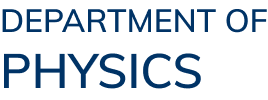Abstract
Metamaterials represent a groundbreaking class of engineered materials structured at the subwavelength scale, enabling unprecedented manipulation of electromagnetic (EM) waves. Unlike passive metamaterials, time-varying metamaterials facilitate dynamic control over EM waves, overcoming the limitations of static systems and allowing for the exploration of time as a novel degree of freedom. Moreover, coding and digital mechanisms are introduced to metamaterials, further advancing the appearance of digitally programmable metamaterials that can flexibly manipulate EM waves in both space and time. Leveraging the programmable nature of metamaterials, we aim to explore additional degrees of freedom in space-time multiplexing of wave propagation. In this thesis, we first demonstrate the generation of a time-varying orbital angular momentum (OAM) beam using a programmable metasurface as a representative case. For enhanced communication capacity, a higher-order twist in the wavefront structure of timevarying OAM beams is constructed with space-time-modulated phase profiles. To measure the generated time-varying OAM field patterns, we propose a two-probe dynamic field mapping technique. Our approach in combining the programmable metasurface and the two-probe technique provides a versatile platform for generating and observing time-varying OAM and other spatiotemporal excitations in general. Furthermore, the metamaterials inherently exhibit delayed wave response to temporal modulation inputs, making the reduction of mode transition time a critical design consideration. We aim to investigate a fast quasiadiabatic (FAQUAD) approach to accelerate time-varying OAM modes transitions by optimizing the modulation rate of control parameters. By fine-tuning the modulation rate of two control parameters along a closed loop encircling a singularity in parameter space, we expedite the mode conversion process by 28%. Our findings provide in-depth insights into the temporal dynamics of time-varying metamaterials and highlight the potential applications of FAQUAD approach in accelerating the temporal evolution of time-varying fields.
On the other hand, the integration of programmable metasurfaces with machine learning techniques paves the way for advanced metasurface inverse design and inverse imaging applications. Specifically, our work focuses on optimizing metasurface phase patterns that enable precise beamforming for multi-user power allocation in complex, obstacle-rich environments. The rapid tunability of programmable metasurfaces allows for the efficient collection of large experimental datasets to train a deep neural network (DNN) for metasurfaces design. These experimental data inherently incorporate complex information of obstacles that are difficult to simulate, eliminating the need for a priori physical system knowledge. Moreover, the DNN can be updated by collecting new experimental data on-site to adapt to changes in the environment. Our approach establishes a robust framework for accurate metasurface inverse design and shows great promise for advancing intelligent wireless communication technologies, such as Wi-Fi and 5G, especially in complex and changeable indoor environments. Besides, we utilized a programmable metasurface alongside machine learning techniques to achieve superresolution imaging at one-tenth wavelength level. The metasurface generates structured reflection phase profiles that serve as illumination patterns for target detection. We collect scattered field data from targets under different illumination patterns as DNN inputs to mitigate the nonuniqueness in regression, enabling super-resolution localization of point-like targets. Our system leverages compressed sensing with a single-pixel detector to capture scattered intensity fields, eliminating the need for full-field scanning and phase retrieval. This approach drastically reduces data acquisition requirements while retaining essential target information, enabling highly practical super-resolution imaging.
In summary, this thesis presents the application of programmable metasurfaces for timevarying OAM generation, adaptive beamforming, and super-resolution imaging. The research highlights the versatility and adaptability of programmable metasurfaces as a powerful platform for exploring temporal dynamics in physics. Besides, our work unlocks new possibilities for technological innovation and interdisciplinary research by integrating programmable metasurfaces with machine learning techniques. The findings from this thesis contribute significantly to the fields of optics and materials science, offering valuable insights and methodologies for future research and development.
